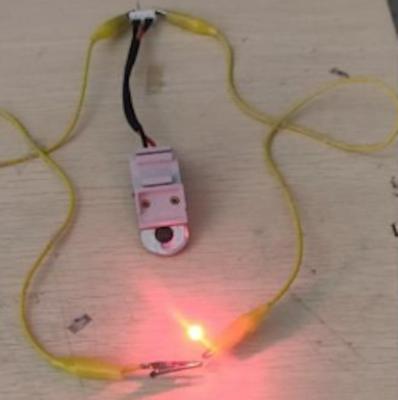Researchers from the Hong Kong University of Science and Technology (HKUST) have developed an inexpensive, lightweight, and lead-free photo-battery that has dual functions in harvesting solar energy and storing energy on a single device. This could enable users to charge a battery under the sun, without having to plug the device into the wall.
Despite the theoretical potential of such photo-batteries, in reality it seems that the poor interface between materials tends to create problems with charge transport, greatly reducing the efficiency in comparison to the simple system of a solar cell wired to an external battery. A team led by Prof. Jonathan Eugene Halpert, Assistant Professor from the Department of Chemistry at HKUST, has made advancements towards developing more efficient photo-batteries by using perovskites.
The lithium-ion battery works by allowing electrons to move from a high energy state to a lower one, while doing work in an external circuit. The photo-battery has a mechanism similar to an ordinary battery except that it need not be supplied current or plugged into the wall to be charged electrically, but can be charged photoelectrically under the sun.
The active material in this new battery is the lead-free perovskite which, when put under light, absorbs a photon and generates a pair of charges, known as an electron and a hole.
The team conducted chrono-amperometry experiments under light and in dark to analyze the increase in charging current caused by the light, and recorded a photo-conversion efficiency rate of 0.428% on photo-charging the battery after the first discharge.
The next step for the team is to experiment with different materials for better performance and efficiency, so that the photo-battery can be commercialized.
“At present, we plug all our appliances into the wall to charge them. With further development in this field of photo-batteries, we might not have to plug them in at all in the future,†said Prof. Halpert. “We might be able to harvest solar energy and use it to fulfil the power requirements of any devices with modest power needs. Our work is one of the initial steps taken in this field, and, of course, a lot of improvements will be needed to achieve better performance, but we are confident that we can improve its stability and average efficiency with further refinement.â€
This photo-battery can serve as the built-in battery for devices such as smartphones or tablets, and even remote energy storage applications, which can be made easy with these photo-batteries for they are lightweight and portable. It should also help lower production cost when compared to a system consisting of a solar cell plus an external battery since only the battery part is required.
